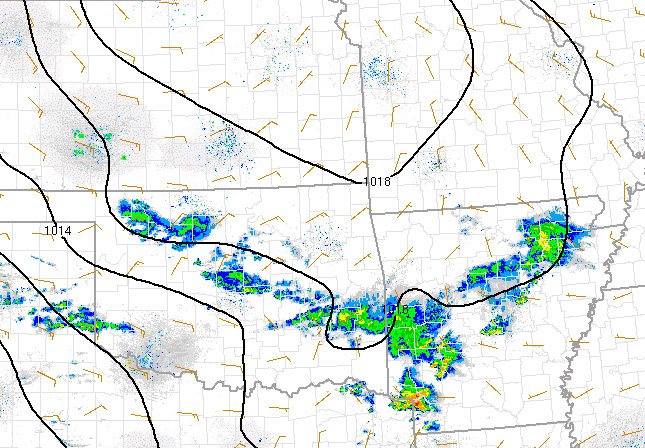
The wind speed is controlled by the pressure gradient force and this motion is from high pressure toward low pressure. The wind direction is controlled by a balance of forces which include influences from the pressure gradient force, Coriolis, friction, centrifugal and gravity. The three main forces that control the surface wind are the pressure gradient force, Coriolis and friction. This will cause a motion that crosses the isobars at about a 30 degree angle toward lower pressure. The map below shows relatively weak high pressure over Kansas and Missouri. The wind is flowing around and away from this high in the typical anticyclonic fashion. Of interest on this map is the influence of the storms on the surface wind. Note the storms over Oklahoma and Arkansas. The wind plots become much more disorganized in the vicinity of the storms. One reason this occurs is due to the downdrafts from the storms. A downdraft is a rushing of air from a storm that falls to the ground due to negative buoyancy. Once the air reaches the ground it spread in all directions like a water balloon popping on the ground and spreads most quickly in the direction of the angle the downdraft was falling to the surface. Storms can also alter the general wind by the inflow that occurs into the updraft of the storm. Storms will often produce gusty wind and varying directions of wind in their vicinity due to the combining of inflow, downdrafts and the general wind pattern that was already in place.  |